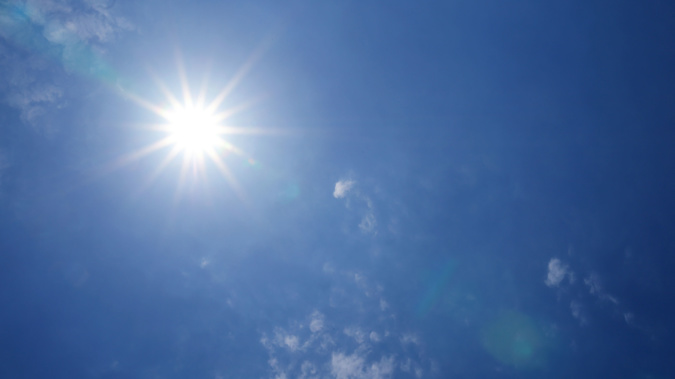
New Zealand just sweltered through its second hottest March on record – prompting scientists to highlight the looming hand of climate change.
According to Niwa's just-issued summary for the month, temperatures during the first month of autumn were at record highs in many places.
The month – which came in at 1.89C above average – goes down as the second-equal hottest on record, tying with March 1999 and just behind March 1968.
Further, Niwa reported today, first three months of this year had been the fourth warmest start to the year since records began in 1909.
The balmy temperatures were consistent with a warming climate and, when seen in context with other warm months, a clear trend was evident, Niwa's principal climate scientist Dr Brett Mullan said.
Niwa climatologists used averages spanning a 30-year period from 1981 to 2010 as the basis of their calculations.
"There were six years before 1930 which did not have a single month in the year warmer than the 1981-2010 average," Mullan said.
"But in 1998 and 2013 11 out of 12 months were warmer than normal."
/arc-anglerfish-syd-prod-nzme.s3.amazonaws.com/public/SCCFBE2VGBD65JOPBNQUOWLALQ.jpg?width=485&height=770&mode=max)
Source / NIWA
Mullan also said that, of the past 100 months from December 2010 to March 2019, 70 were warmer than average and 30 colder than average.
"If New Zealand had maintained the climate it had from 1981 to 2010, we would have expected a 50:50 split. This is a huge divergence."
Further, New Zealand hadn't experienced a nationwide monthly mean temperature that was below average in 26 months - or since January 2017.
"The increasing frequency of warm months versus cold months is clear evidence of a warming climate," Mullan said.
"Greenhouse gas increases are the driving factor behind the progressive warming for New Zealand and the globe.
"We can expect high temperature records to be broken with increasing frequency over the coming years."
From Cape Reinga to the bottom of the South Island, record mean air temperatures were reached last month.
March was also a dry month for many locations, although extremely heavy rainfall occurred in the western South Island between March 25 and 27.
That was down to an "atmospheric river" extending from Australian cyclones, coupled with extra energy from the Tasman Sea marine heatwave, as well as a strong low-pressure system siphoning moisture toward New Zealand.
New Zealand's six main centres all recorded well above average March temperatures with Dunedin experiencing its warmest March on record.
The highest temperature of the month was 32.4C at Waipara on March 5.
Also of note was Ranfurly with a mean maximum temperature during March of 23.4C, which was 4C warmer than average and the highest since records began there in 1897.
Warmer than average sea surface temperatures persisted throughout March and marine heatwave conditions continued in the Tasman Sea and in parts of New Zealand's coastal waters.
/arc-anglerfish-syd-prod-nzme.s3.amazonaws.com/public/HFJ2KRAWH5ATFAAMYV4WKNRZLY.png)
Source / NIWA
Meanwhile, Australia just experienced its hottest March on record, and its hottest first quarter of the year ever recorded.
Looking ahead, Niwa has picked above-average temperatures that have persisted past summer to hang around over much of the country, and right into the first month of winter.
It also warned of the potential for more big downpours over the next three months around in the west and north of the South Island, which was only just hit by a record deluge.
March at a glance
TEMPERATURES:
It was New Zealand's equal second warmest March on record. The nationwide average temperature in March 2019 was 17.6C. Temperatures were above average (0.51C to 1.2C above average) or well above average (more than 1.2C above average) across the entire country. Many locations observed record or near-record warm mean, mean maximum or mean minimum March temperatures.
RAINFALL: Rainfall was below normal (50-79 per cent of normal) or well below normal (less than 50 per cent of normal) across much of the North Island. The only exceptions were parts of Taranaki and the Central Plateau along with the Kapiti Coast and Wellington City which observed near normal (80-120 per cent of normal) or above normal (120-149 per cent of normal) rainfall. In the South Island, rainfall was generally above normal or well above normal (more than 150 per cent of normal) in the west and far north, while the east and far south observed below to well below normal rainfall.
SOIL MOISTURE: As of April 1, drier than normal soils were present across the majority of the North Island and a large portion of the South Island. Conversely, soil moisture levels were slightly higher than normal in northern Marlborough and Tasman, along with the West Coast, and parts of Otago. Meteorological drought conditions were present in Western Bay of Plenty as of March 30.
Headline figures
- The highest temperature was 32.4C, observed in Waipara West on 5 March.
• The lowest temperature was -1.5C, observed in Hanmer Forest on 1 March.
• The highest one-day rainfall was 401mm, recorded at Milford Sound on 25 March.
• The highest wind gust was 139km/h, observed at Cape Turnagain on March 14.
• Of the six main centres in March 2019, Auckland was the warmest, Dunedin was the coolest, driest and sunniest, Wellington was the wettest, and Christchurch was the least sunny.
• Of the available, regularly reporting sunshine observation sites, the sunniest four regions in 2019 are Wider Nelson (857 hours), Marlborough (833 hours), Bay of Plenty (819) and Taranaki (819 hours).
Take your Radio, Podcasts and Music with you









